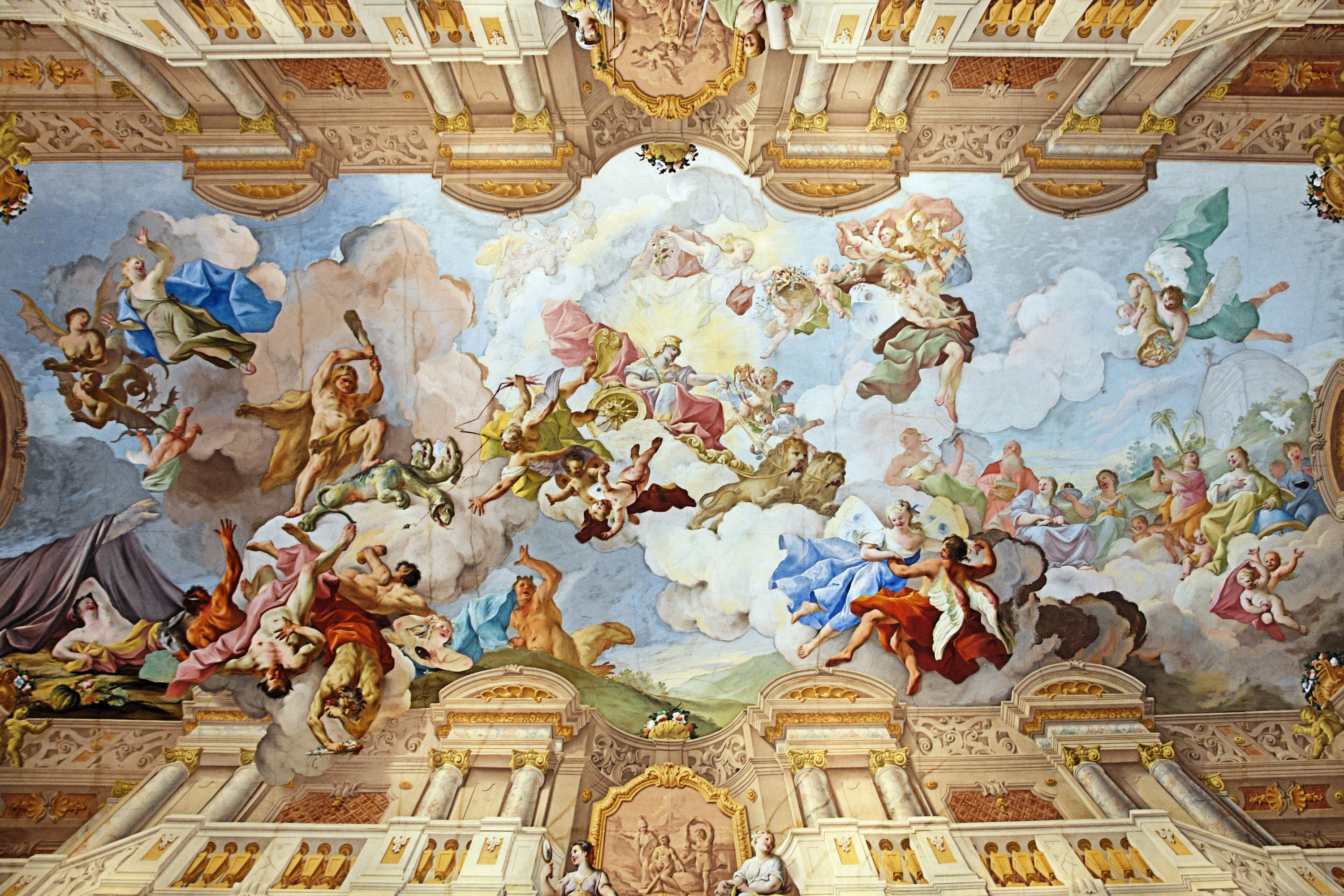|
Melk Abbey
Melk Abbey (german: Stift Melk) is a Benedictine abbey above the town of Melk, Lower Austria, Austria, on a rocky outcrop overlooking the Danube river, adjoining the Wachau valley. The abbey contains the tomb of Saint Coloman of Stockerau and the remains of several members of the House of Babenberg, Austria's first ruling dynasty. History The abbey was founded in 1089 when Leopold II, Margrave of Austria gave one of his castles to Benedictine monks from Lambach Abbey. A monastic school, the Stiftsgymnasium Melk, was founded in the twelfth century, and the monastic library soon became renowned for its extensive manuscript collection. The monastery's scriptorium was also a major site for the production of manuscripts. In the fifteenth century the abbey became the centre of the Melk Reform movement which reinvigorated the monastic life of Austria and Southern Germany. Today's Baroque abbey was built between 1702 and 1736 to designs by Jakob Prandtauer. Particularly noteworthy are the ... [...More Info...] [...Related Items...] OR: [Wikipedia] [Google] [Baidu] |
Paul Troger
Paul Troger (30 October 1698 – 20 July 1762) was an Austrian painter, draughtsman, and printmaker of the late Baroque period. Troger's illusionistic ceiling paintings in fresco are notable for their dramatic vitality of movement and their palette of light colors. Paul Troger’s style, particularly in his frescoes, dominated Austrian painting until the end of the 18th century and profoundly influenced significant artists of the next generation, notably Franz Anton Maulbertsch, Josef Ignaz Mildorfer, Johann Wenzel Bergl and Johann Lucas Kracker. Life Paul Troger was born on 30 October 1698 in Welsberg, in the Puster Valley of the County of Tyrol. At the age of 16, under the patronage of the aristocratic Tyrolean von Firmian family, he visited Fiume and became a pupil of Giuseppe Alberti. He painted his first fresco “Three Angels with the Cross and Putti”, in the Kalvarienkirche, Kaltern (1722). In 1722, the prince-bishop of Gurk sent Paul Troger to Venice, where he d ... [...More Info...] [...Related Items...] OR: [Wikipedia] [Google] [Baidu] |
Jakob Prandtauer
Jakob Prandtauer (baptized in Stanz bei Landeck (Tyrol) on 16 July 1660; died in Sankt Pölten on 16 September 1726) was an Austrian Baroque architect. Trained as a stonemason rather than as an architect, he designed and supervised the construction of the church of Melk Abbey, in Melk, Lower Austria. He was the uncle of Josef Munggenast, who inherited his business and continued his style. References Bibliography * * Huberta Weigl, ''Prandtauer, Jakob.'' In ''Allgemeines Künstlerlexikon. Die Bildenden Künstler aller Zeiten und Völker (AKL)''. Vol. 96, de Gruyter, Berlin 2017, , . * Hugo Hantsch, ''Jakob Prandtauer. Der Klosterarchitekt des österreichischen Barock'', Vienna 1926. * Huberta Weigl, ''Jakob Prandtauer 1660–1726. Baumeister des Barock'' (Studien zur internationalen Architektur- und Kunstgeschichte, Band 183), Michael Imhof Verlag, Petersberg Petersberg may refer to: * The Hotel Petersberg near Bonn, the site of the ** Petersberg Agreement, 1949, regard ... [...More Info...] [...Related Items...] OR: [Wikipedia] [Google] [Baidu] |

